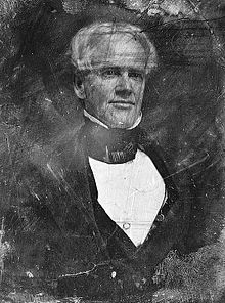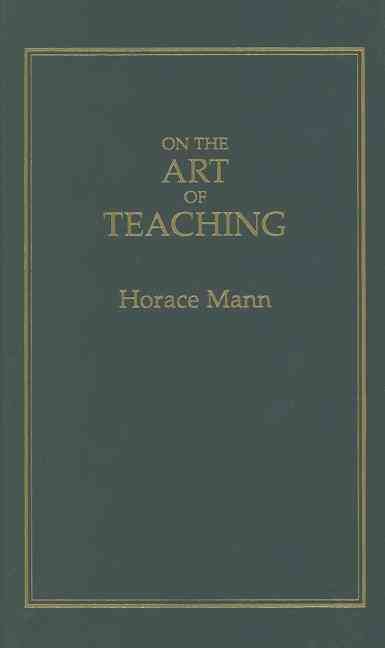Publisher’s Note: At Metropolis Café, we are fans of neither Horace Mann nor John Dewey. Although Mann had some interesting opinions (and some were damned good), the direction of both of these individuals – were of a Socialistic bent toward Indoctrination – not Education. ~ J.B.

Horace Mann
Getting your picture on a U.S. stamp, even a one cent one, requires that you have accomplished something significant. In the case of Horace Mann of Franklin Mass., he accomplished notable things in the early 19th century in three different fields— law, politics, and finally education,only to return to politics once more, this time as a U.S. Representative (previously he had only been involved in Mass. politics). In 1837, Mann became the president of the Massachusetts Board of Education, which was in fact the first such Board in any state in the U.S. and he served on that Board for twelve years. In his fourth year, he produced the essay now known as ‘the Art of Teaching’ which in fact was part of his report to the Board of Education. The essay is about educating children, but it has in some respects a quality to it that would apply to any sort of education and any age of student in any day and age. I intend to review some of the major points of the essay in this post.
Mann lists a series of qualifications in order for a person to be a good teacher. He first mentions a thorough-going knowledge of the subjects which one must teach. “This knowledge should not only be thorough and critical but it should be always ready at command for every exigency, familiar like the alphabet, so that, as occasion requires, it will rise up in the mind instanteously and not need to be studied out with labor and delay.” (Applewood Books Edition 1989, pp. 9-10). In other words, the teacher must not only have a clear grasp of his subject matter in all its major parts, but also the person must be so familiar with his or her material that one can readily recall the relevant bits as occasion demands.
It is not enough then to be a good student of a subject matter, a good researcher with a relish for the subject. One must also be a good and ready conveyor of the information to others. Mann stresses that unless one knows one’s subject well, one will miss or overlook errors in students’ papers. Were this to applied say to the subject of learning the Bible, Mann would have said that you need a thorough knowledge of the most foundational discipline for studying that book– namely a knowledge of the languages, syntax, grammar in which it was originally written. It is more than a little astounding that some think today that you can get away without knowing the languages, and still become some sort of expert in the Bible. “However much other knowledge a teacher may possess, it is no equivalent for a mastership in the rudiments. It is not more true in architecture than in education that the value of the work in every upper layer depends on the solidity of all beneath it.” (p. 12).
Mann then stresses that the ability to acquire knowledge is one thing, the ability to impart it is another. How well do I know it. I once had a graduate student for a teacher of calculus at Carolina. The man knew his field, but all he did was stand up and read the textbook to the class— class after class. The running joke was that the difference between him and the textbook, was that the latter did not stutter. And rarely, when asked, was he able to adequately explain anything to a student’s satisfaction. I was lucky to get some kind of B in that class.
In the field of Biblical studies I blame this lame approach to teaching, which is too often in evidence, to the fact that many teachers have never had any pedigogy classes in their life, or if they did, they ignored or forgot all they learned. In other words, they are experts in their field, but novices in how to convey their knowledge to others. While I agree that teaching is an art more than it is a science, at least seasoned educators can help the novice learn how best to convey their subject matter.
Mann stresses that the good teacher has to have the powers of discerning whether or not a student understands the subject matter he has been taught, and if he or she does not, knows what to do to remove the impediments to learning. The teacher should be able to answer questions like– How much does the pupil comprehend the subject matter? Do the tests given adequately reveal what the student knows or doesn’t know? Does the teacher know what to do next if the student isn’t grasping things? Is the student heading towards error or truth in regard to the subject matter? In other words, the teacher needs to be able to discern what the student knows, feels, and needs, supplying what is lacking. This of course requires some personal interchange with the student, which is difficult in the case of distance or online education. The student should be given tools so that they can continue to learn on their own after the class is over. Mann stresses as well that the teacher must make the subject appealing, so that the student will be enthusiastic about learning it.
Mann also stresses that good pedagogy requires orderly presentations to the student, so they can learn step by step. And when the learning is cumulative in nature it is especially crucial to teach some things before other things. Mann also says that the teacher must master not just “common methods for common minds but.. peculiar methods for pupils of peculiar dispositions and temperament” (p. 20). Again, this requires extended observation of the student over time, and even outside the classroom. This is largely impossible in online classes.
Mann then forays into the touchy subject of the art of managing the classroom itself. He stresses firstly that one of the keys to managing a class is suiting the lessons to the aptitude of the students. But then one must know what that aptitude is first. If the lessons are long, or difficult, it will be difficult for the student to repeat back what he has learned, or deduce anything from it. Mann worries about and warns against excessive negative reinforcements (continual bad marks, without spending time with the student to find out where the difficulties lie and helping them overcome them). In other words, he expects the teacher to take pains and time to know and sympathize with the plight of the less bright or poorer student. Mann assumes there will be times of recitation in class by the students, so the teacher can assess where the student is in the learning process.
 In regard to disciplining recalcitrant students, he says it is sanctioned by law and public opinion (of his day), but “it is the last resort, the ultimate resource, acknowledged on all hands to be a relic of barbarism..” (p. 26). He is talking specifically about public shaming or ridiculing of the student before his peers. He adds, “When the arts of health and education are understood, neither poison nor punishment will need to be used, unless in most extraordinary cases.” (p. 26). These are pretty remarkable sentiments for the middle of the 19th century. He advises that a steady hand is needed, and not some lurching back and forth between a light and severe form of discipline.
In regard to disciplining recalcitrant students, he says it is sanctioned by law and public opinion (of his day), but “it is the last resort, the ultimate resource, acknowledged on all hands to be a relic of barbarism..” (p. 26). He is talking specifically about public shaming or ridiculing of the student before his peers. He adds, “When the arts of health and education are understood, neither poison nor punishment will need to be used, unless in most extraordinary cases.” (p. 26). These are pretty remarkable sentiments for the middle of the 19th century. He advises that a steady hand is needed, and not some lurching back and forth between a light and severe form of discipline.
Finally Mann urges the molding of good behavior, which presupposes that the teacher models the very behavior he is trying to mold in students. The teacher is to be “the glass/mirror at which the students do dress themselves” (p. 30). If this is to be the case, then “how strong is the necessity that he should understand those nameless and innumerable practices in regard to deportment, dress, conversation, and all personal habits that constitute the difference between a gentleman and a clown!’ (p. 31).
Alas, many teachers today think that being a clown, and entertaining the class is the chief way to get students to pay attention and get interested in the subject matter. In short, too many teachers strive for eccentricity or just ‘being their rumpled selves’ when in fact they have failed to remember that students become what they admire.
Written by Ben Witherington and published by Patheos ~ April 1, 2013.
FAIR USE NOTICE: This site contains copyrighted material the use of which has not always been specifically authorized by the copyright owner. We are making such material available in our efforts to advance understanding of environmental, political, human rights, economic, democracy, scientific, and social justice issues, etc. We believe this constitutes a ‘fair use’ of any such copyrighted material as provided for in section 107 of the US Copyright Law. In accordance with Title 17 U. S. C. Section 107, the material on this site is distributed without profit to those who have expressed a prior interest in receiving the included information for research and educational purposes. For more information go to: http://www.law.cornell.edu/uscode/17/107.shtml
